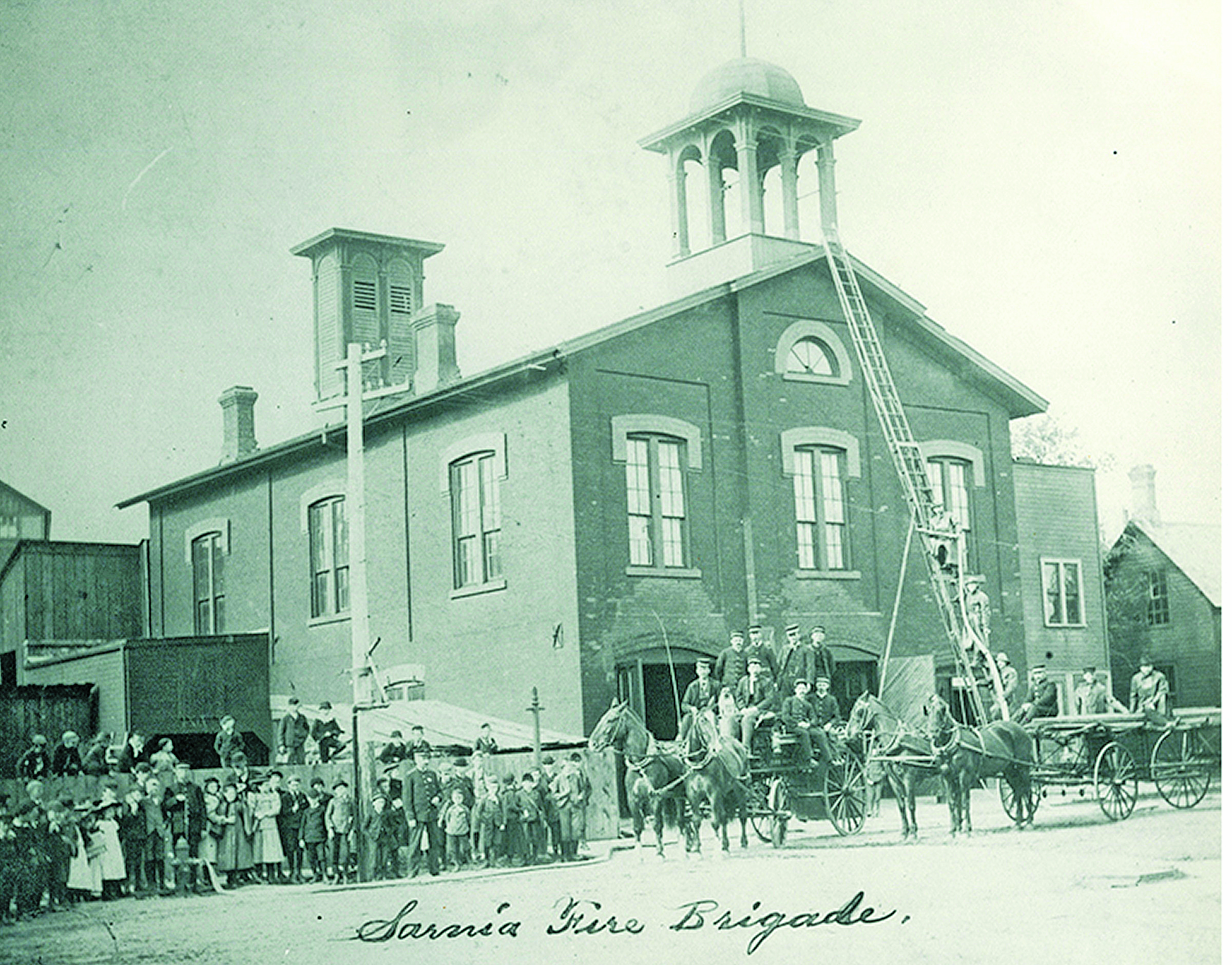Phil Egan
In August of 1859 the sounds of hammers and saws created a din as the new fire and town hall began to rise on George Street.
This was an edifice built to last. The project cost council $3,500 and the builder was determined to see the town got its money’s worth.
But all was not tranquil among Sarnia’s firefighters. That August, feeling exasperated and unappreciated, Captain Ireland and 32 men of the Rough and Ready Hook and Ladder Company tendered their resignations from the Sarnia Fire Department.
The issue was a $4 per man stipend.
Sarnia’s fire service was approaching its 19th birthday, and throughout the years since 1840 the men involved had been expected to participate as a civic duty, and because the challenge of fighting fires appealed to their sense of masculinity and adventure. It had begun as a volunteer force, and so it remained almost two decades later.
Firefighters had also been expected to pay their own way. They bought their own uniforms, caps and belts. With regular parades now part of their lives on both sides of the border, they were finding that keeping up appearances was costly.
And they enjoyed exhibiting their skills. Regular competitions of firefighting displays and drills with Port Huron’s Torrent Company, and with other firefighting teams in the county, had added travel to the expense of being a firefighter.
Feeling the town owed them a little consideration, the firemen asked for $4 per man, and for the town to purchase the company new uniforms.
Council frowned at the request, irritated by an apparent lack of gratitude on the part of the firemen. The previous summer, the town had invested a substantial amount of money in purchasing a new fire engine for them, including hooks and ladders and a ladder wagon. And the brand new combined town and firehall was preparing to open on George Street – another substantial investment in land and construction costs. Sarnia’s overburdened ratepayers deserved a little relief, councillors believed.
So they refused the request and the resignations followed.
Compounding the hard feelings was a rumour that suggested town council had denied the request anticipating the effect the refusal would have. According to the rumour, councillors were unhappy with the composition of the fire company. They wanted to reorganize it and draw representatives from the ranks of the “aristocracy” of the town – the more notable families who, among other things, were more able to fund their own enthusiasm for fighting fires.
As noted earlier, Sarnia’s commercial core was badly damaged by fires in 1866 and again in 1867, the year of Confederation.
And in both cases the community was forced to rely on a fire brigade from across the river in Port Huron to help extinguish the flames.
So, in January of 1868, town council agreed to invest in a steam fire engine – the same Clapp & Jones engine manufactured in New York and used in Port Huron.
The townspeople of Sarnia had witnessed its effectiveness multiple times after the American firefighters had come to their rescue.
Bonds were issued to cover the $4,000 (U.S.) cost and an Engine House was built on the river at the foot of George Street.
Permanent water tanks were placed at London Road and what’s now Brock Street, with a third located in the South Ward.
And in the newly constructed St. Andrew’s Presbyterian Church on Christina Street, a bell was installed with a special fire alarm attached. The church’s fire bell became the key signal for alerting firefighters in an emergency.
The steam engine arrived in March and was taken to the Market Square with great fanfare for a test. The goal was to see the engine cast a stream of water a distance of 230 feet through a 1-1/4 inch nozzle, with 100 feet of hose.
It didn’t work.
The steam fire engine, it appeared, was a little trickier to operate than the older hand-brake engines. The fire brigade tried again the following Monday and this time had more success.
But another test lay ahead. Sarnia’s ‘Blazing ‘60s’ weren’t over yet.
The old Methodist Chapel, built in 1837 under the supervision of Rev. James Evans, had been moved from its original location to Lochiel and Brock streets, where it was used as a juvenile school and meeting place for the Dialectic Society and the fraternal lodge of the Good Templars.
The Methodists didn’t like ornamentation in their churches. Sarnia’s was made of white brick with no steeple and no organ, which church members believed were ostentatious.
On April 14, 1868 a fire broke out that destroyed the old Methodist Chapel. While its architectural value wasn’t high, the chapel represented one of the town’s most historically significant structures.
It was a loss even the town’s new steam fire engine couldn’t save.


